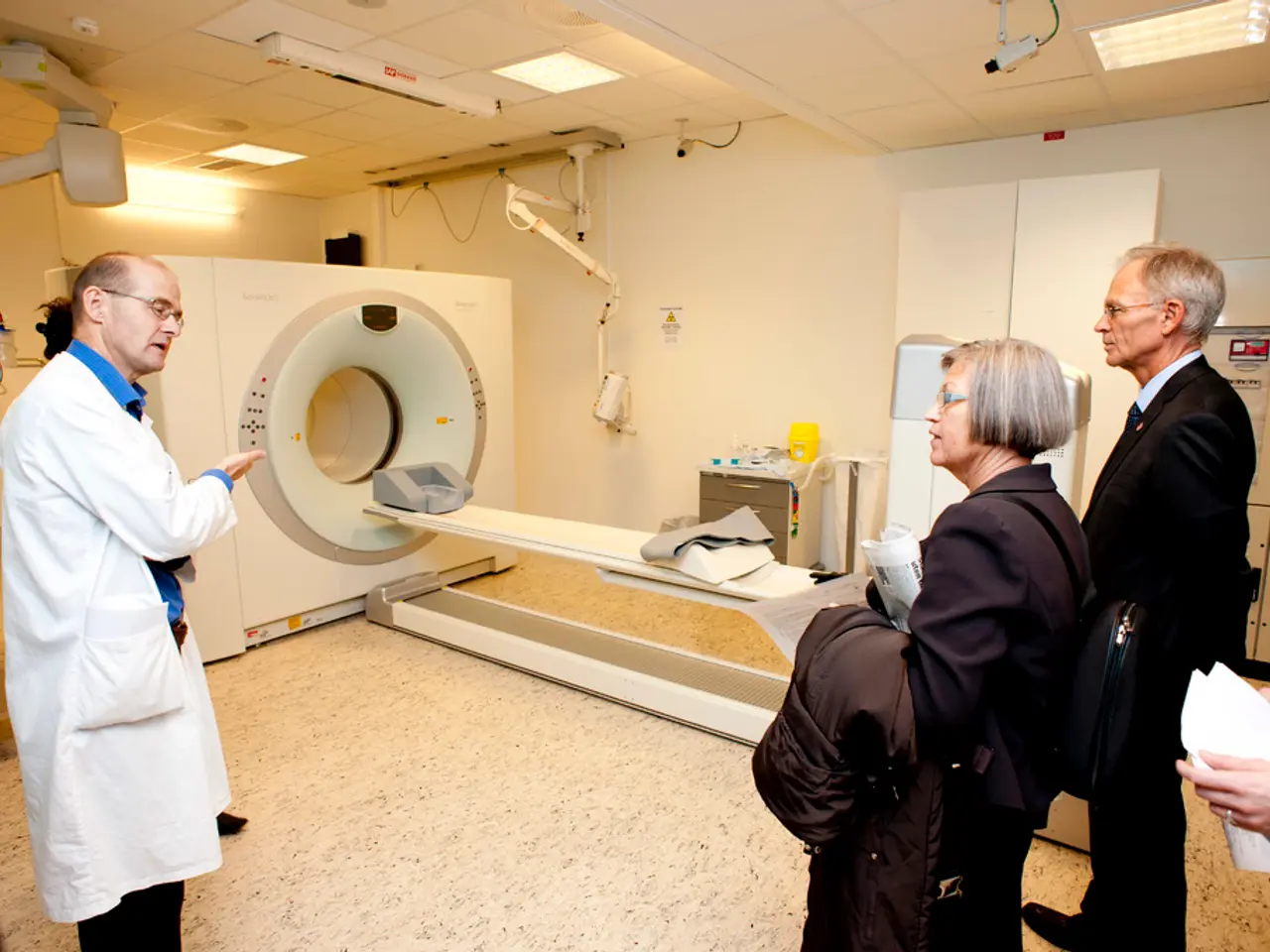Alternative Approaches to Prostate Biopsy: Exploring Three Options
In the quest to detect prostate cancer early, several alternative tests have emerged, each with its own advantages and limitations. Prostate biopsy, while remaining the gold standard for diagnosing the disease, is not without its risks.
Prostate Biopsy: A Definitive Diagnostic Tool
A prostate biopsy provides a definitive diagnosis by directly sampling prostate tissue. It can confirm the presence, aggressiveness, and extent of cancer, which guides treatment decisions. However, the procedure is invasive, causing potential discomfort, bleeding, and infection. There is ongoing debate regarding whether biopsies might contribute to cancer spread or make it more aggressive [1].
Alternatives to Prostate Biopsy
Given the risks associated with prostate biopsy, alternative or complementary approaches have been developed. One such approach is PSA (Prostate-Specific Antigen) blood testing, a simple, non-invasive screening tool used to screen for elevated PSA levels that may indicate prostate cancer risk or other prostate issues. However, it's essential to note that elevated PSA is not specific to cancer and can be caused by inflammation or enlargement of the prostate [2].
Another alternative is Multiparametric MRI (mpMRI), which uses magnetic fields and radiofrequency pulses to produce a clear prostate image. Spectroscopic imaging in MRI scans aims to distinguish prostate cancer from other causes of prostate enlargement. This can reduce unnecessary biopsies and help focus sampling on high-risk areas [3].
Active surveillance and selective biopsy are also options for some men with low-risk profiles. Instead of immediate biopsy, these men may be closely monitored with PSA measurements and imaging to avoid overdiagnosis and overtreatment [4].
Balancing Risks and Benefits
Ongoing improvements in imaging and risk stratification are helping reduce unnecessary biopsies and their associated harms. MRI scans, for instance, are less invasive and can provide information about prostate cancer risk. Contrast imaging in MRI scans observes blood flow in and around the prostate with the help of a dye, while diffusion-weighted imaging examines how the prostate absorbs water [5].
In conclusion, while prostate biopsy remains critical to diagnosing cancer, ongoing improvements in imaging and risk stratification are helping reduce unnecessary biopsies and their associated harms. It is crucial for individuals to consult their doctors to determine the best preventive checks for prostate cancer, as each alternative method varies in its ability to detect different types of prostate cancer.
References:
[1] American Cancer Society. (2020). Prostate cancer: Diagnosis and staging. Retrieved from https://www.cancer.org/cancer/prostate-cancer/detection-diagnosis-staging.html
[2] National Cancer Institute. (2020). Prostate cancer: Diagnosis. Retrieved from https://www.cancer.gov/types/prostate/hp/prostate-diagnosis-pdq
[3] Mayo Clinic. (2020). Prostate cancer: Diagnosis and staging. Retrieved from https://www.mayoclinic.org/diseases-conditions/prostate-cancer/diagnosis-treatment/drc-20372208
[4] National Institute for Health and Care Excellence. (2019). Prostate cancer: diagnosis and management. Retrieved from https://www.nice.org.uk/guidance/cg68
[5] National Cancer Institute. (2021). Prostate cancer: Imaging. Retrieved from https://www.cancer.gov/types/prostate/hp/prostate-imaging-pdq#section/_128
- Mens seeking early detection of prostate cancer may benefit from alternative tests like MRI scans, PSA blood testing, and selective biopsy, which hold their unique advantages and limitations, each helping reduce risks associated with invasive methods.
- The science of medical-conditions like prostate cancer has advancements in imaging technology, such as contrast imaging and diffusion-weighted imaging in MRI scans, which are less invasive and can provide invaluable information about cancer risk.
- When it comes to health and wellness, Asian men should be aware of their prostate health, understanding the importance of preventive checks for prostate cancer, as each alternative method varies in its ability to detect different types of prostate cancer.
- Asthma and prostate cancer are two distinct medical-conditions, but a comprehensive health approach should consider the possible presence of both, as men with asthma might have a higher risk of developing certain types of cancer, like prostate cancer.
- In collaboration with medical professionals, it is essential for men to make informed decisions about prostate cancer testing, weighing the risks and benefits of alternative methods such as PSA blood testing, MRI scans, active surveillance, and selective biopsy.




